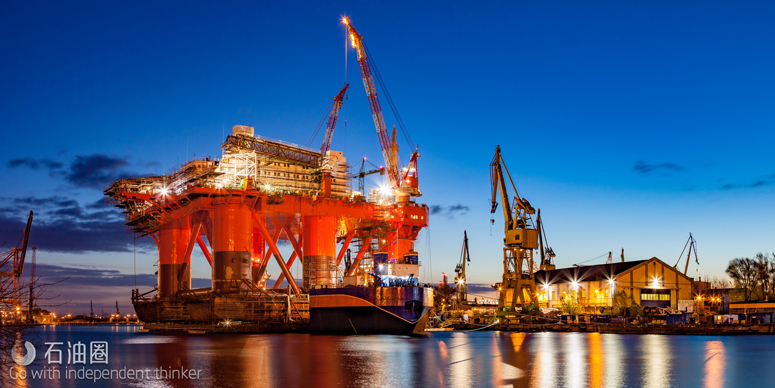Investors are circling after ExxonMobil’s Snoek well became the third successful discovery in the Stabroek block, writes Tom Rees
WHAT: The discoveries could see Guyana producing over 400,000 bpd in the next decade.
WHY: At least two FPSOs are being mobilised for the Stabroek block.
WHAT NEXT: Eco Atlantic and Tullow are shooting 3D seismic in nearby blocks, as the pace of exploration also picks up in neighbouring Suriname.
ExxonMobil made another oil discovery offshore Guyana last week. The US super-major said it had found 25 metres of “high-quality oil-bearing sandstone reservoirs” at its Snoek well, the third discovery in the Stabroek block.
The Snoek discovery follows the firm’s successes at the Payara and Liza fields in the block, the latter of which is estimated to contain up to 1.4 billion barrels of light oil.
The focus offshore Guyana will now turn to surrounding exploration blocks, such as Orinduik and Kanuku, two neighbouring licences that will undergo 3D seismic surveying this quarter.
Eco Atlantic’s CEO Gil Holzman, whose company has a 40% stake in the Orinduik block, told NewsBase Intelligence (NBI) that ExxonMobil’s recent discoveries had turned Guyana into “one of the hottest exploration areas in the world right now”.
Though ExxonMobil’s head of exploration, Steve Greenlee, has described the Guyanese offshore as a “technically complex play”, Holzman believes more discoveries will be made as companies’ understanding of the area’s geology improves.
“The hit rate is getting better and better, because they understand the basin geology much better. With every well that is being drilled and hit, it’s much easier to calibrate and understand how the geology of the entire Guyana-Suriname Basin works,” said Holzman. Thus far, only one well at Stabroek, SkipJack, has turned up dry.
Eco Atlantic along with its partner Tullow Oil, which operates Orinduik, aims to have completed a 3D seismic survey by the end of the second quarter. Potential drilling targets have already been identified based on a 2D seismic survey, which should make the interpretation process quicker than usual.
“Assuming all goes to plan, we are hoping to have identified our drilling targets by the end of the year and, if oil prices stay the same and the overall market stays the same, we can even be in the position to be drilling in 2018 which is three years ahead of schedule. But of course all these decisions need to be taken with our block partners and the operator Tullow,” said Holzman on the joint-venture’s accelerated plan to unlock the estimated 900 million barrels in the block.
Rising interest
Holzman said there was a buzz developing around the country’s emerging oil industry and that the majors were beginning to circle around its offshore assets.
“I just came back from Guyana two days ago and we co-sponsored a big oil and gas conference there that was organised by the Guyana Oil and Gas Association. You could see by the turnout, you could see by the various stakeholders that had arrived, by the foreign governments and service providers there that the area is quite hot.”
“If you had tried to have this conference two years ago in Guyana, the turnout would probably have been 40 people and most of them locals. But we had 350 people coming, paying a lot of money for the conference and the atmosphere was very vivid,” said Holzman, whose company secured the Orinduik licence, which lies just 6.5 km south of the Liza discovery, in January 2016.
Holzman added that several big names had approached Eco Atlantic regarding its stake in Orinduik but the company was “not in any hurry” to sell part of the block with the 3D seismic programme already fully funded. The company raised the capital required for the upcoming programme by floating on London’s Alternative Investment Market (AIM) in February, raising GBP5.1 million (US$6.4 million).
Although Eco Atlantic owns 23,000 square km in the Walvis Basin off the coast of Namibia, the Orinduik licence has “naturally” stolen the limelight and the company’s focus has now turned to the Guyana-Suriname Basin. The US Geological Survey (USGS) says the basin is the second-most prospective, underexplored offshore basin in the world, estimating crude reserves at 13.6 billion barrels and gas deposits of 32 tcf (906 bcm).
First oil
ExxonMobil announced last month that it anticipates first oil from the Liza field in 2020, by which time it will have invested US$5 billion in the project.
ExxonMobil’s CEO Darren Woods said in a recent investor presentation that the field’s output would reach 100,000-120,000 bpd during Phase 1 with a breakeven cost of US$40 per barrel.
It is anticipated that two FPSOs will be used to develop Liza and Payara, with the Snoek find probably meaning another vessel will also be required. The discoveries that have been made to date, along with future finds, could see Guyana’s oil production peak at around 450,000 bpd in the next decade, according to estimates by Wood Mackenzie, a consultancy. Although ExxonMobil has held the Stabroek exploration licence since 1999, it only discovered Liza two years ago.
ExxonMobil owns a 45% stake in the block with Hess and Chinese state-run CNOOC’s subsidiary Nexen holding stakes of 30% and 25%, respectively.
Holzman said that ExxonMobil had “completely opened up a new play” and that big companies would now flood the sector in Guyana “because the risk is decreasing”.
He added: “ExxonMobil is a big company, they know what they’re doing, they’ll make sure the infrastructure is in place.”
Although Guyana currently lacks the infrastructure to refine the oil that is produced, nearby Trinidad and Tobago could be leveraged as a processing hub, with reports emerging last week that the country’s Prime Minister Keith Rowley had flown out to Texas to meet with senior ExxonMobil officials.
Guyana, which has never produced oil before, is taking “very big steps to make sure [it] can accommodate these big oil companies”, according to Holzman.
“They are very savvy, they are taking their steps very carefully. They have learnt from other people’s mistakes. They consult with everyone to make sure everything is in place by the time it should be,” said Holzman, who has 12 years of experience working in the sector in Africa. “They are all very focused on taking this once in a lifetime opportunity for the nation.”
That said, Guyana set its fiscal terms at a level that would draw in investment in exploration in what was a high risk frontier area. The success of ExxonMobil and its partners in proving prospectivity could see the fiscal terms tighten.
In the meantime the focus in exploration terms will be on Eco Atlantic and Tullow as they execute their 3D seismic survey. Attention will also shift to Suriname where Apache is drilling the Kolibri-1 well in Block 53 and where Tullow has also outlined plans to drill in Block 54 this year.
Their work will go some way to proving whether the play stretches out across the Guyana-Suriname Basin or if the commercial quantities of oil are only located around the Stabroek block.


 石油圈
石油圈

